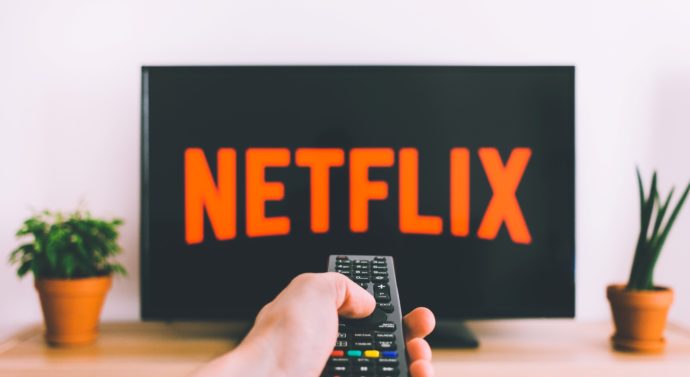
How Netflix influences the ways we view media
News April 26, 2019, Comments Off 159Netflix began in Scotts Valley, Ca. in August of 1997. Two marketing professionals, Marc Randolph and Reed Hastings, invested $2.5 million to start an e-commerce company in the growing shadow of Amazon. They launched Netflix in April of 1998, shipping rental DVDs across the country.
The rest is history. In 2018, Netflix boasted an impressive $15.8 billion revenue. It has received accolades calling it one of the best media-service providers available. Over the past four years, Netflix has launched dozens of original movies, shows and documentaries.
Netflix’s early history and influences
Netflix has influenced media since its inception. DVDs had only been introduced in the U.S. in March of 1997 and were a relatively new concept. As DVDs caught on, in part because of Netflix’s ability to make them so easily accessible, Netflix boomed and started selling stock in 2002. The next fiscal year, Netflix was making $272 million, and was shipping 1 million DVDs a day in 2005.
Netflix received some attention in 2012 when they filed to form a political action committee, FLIXPAC. Joris Evers, a Netflix spokesperson, tweeted that FLIXPAC’s purpose was to “engage on issues like net neutrality, bandwidth caps, UBB [a data cap] and VPPA [the Video Privacy Protection Act].” Politico called the committee “another political tool with which to aggressively press a pro-intellectual property, anti-video-piracy agenda.” Hacktivist group Anonymous called to boycott Netflix.
Netflix did not slow, however, and continued to build a reputation for itself.
Original content
By the time Netflix began to offer their subscription service separately from their DVD rentals in 2010, they had already begun producing independent films.
Netflix began streaming original content in 2013 with “The Short Game,” a documentary about child-golfers, and “House of Cards,” a political drama. Their first original film was released in 2015.
Since then, Netflix has released dozens of original titles. Many have become cultural icons such as “Queer Eye,” or have taken social media by storm such as “Bird Box.” Up to and following the release of “Bird Box” in late 2018, the show inspired countless internet memes that circulated across social media platforms such as Twitter, Facebook and Reddit. Netflix originals span virtually every genre, from animated comedy (“Big Mouth”) to superhero shows (“Daredevil,” “The Punisher”) to horror (“The Haunting”).
In the modern era of online streaming services, Netflix needs to keep an edge over competitors such as Hulu or Amazon’s Prime Video. The media giant accomplishes this largely through its original content, spanning genres and demographics.
With rival streaming services also providing original works, such as Hulu’s “The Act” or Prime’s “Good Omens,” Netflix needs to find a new way to impress viewers and keep membership high.
Netflix’s Strategies
According to statistics from tech news outlet Wired, more than 80 percent of shows people watch on Netflix are introduced through Netflix’s recommendation system. Netflix employs algorithms, processes for calculation and problem-solving, to determine what certain viewers might be interested in.
This strategy is gold for media producers and streaming services. Each individual audience member has particular and unique tastes, preferences and favorite things to see on screen. Audiences, especially American ones accustomed to this easily-accessible individualism, desire the ability to filter what they want to see.
Until now, this sort of individual experience was limited to what shows and movies were recommended based on previous views and expressed interests. To stay ahead, Netflix had to do something unique.
The Next Step
In Dec. 2018, Netflix released “Bandersnatch,” an original film with a twist: the ending is dependent on the viewer’s choices. The “interactive viewing experience,” as Netflix called it, was first implemented for a younger audience with “Puss in Book: Trapped In An Epic Tale,” in 2017. The experiment was successful, so “Bandersnatch” was hatched as an “adult version,” as critics have called it.
The film is based on episodes of another Netflix project, “Black Mirror,” an anthology series ironically themed around the dangers of technology. The viewer is faced with choices throughout the progression of the story, with each decision impacting how the plot progresses. So far, Netflix has admitted five main endings, and each time a viewer plays along, there is a chance of “discovering” a new ending.
This “choose-your-own-adventure” style of interaction is traditionally done through books, but Netflix brought it into the limelight as a visual medium. It takes the philosophy of individualization and applies it to the actual content itself, creating something that can come in millions of flavors.
“Bandersnatch” does not play with Netflix’s algorithms. That is where “Love, Death & Robots” comes in.
First aired on March 15, 2019, “Love, Death & Robots” is an animated anthology series covering a host of animation styles and storylines. Viewers soon realized something was strange about the new series, however: the episodes change order. The episodes played in different orders for different viewers, which Netflix explained in a tweet: “We’ve never had a show like Love, Death & Robots before, so we’re trying something completely new… presenting four different episode orders.”
The sci-fi anthology uses Netflix’s recommendation algorithms to determine which of four potential episode orders a viewer is most likely to enjoy. Netflix has come under fire for this decision, with some viewers pointing out that one of the most common pilot episodes, “Sonnie’s Edge,” contains LGBTQ themes while the other most common pilot, “Beyond the Aquila Rift,” is more heteronormative. Critics paint this as “Netflix thinks I’m gay,” claiming that sexuality should not influence how or when the media is presented.
Experimentation by Netflix to adapt to a social climate of individualization in media consumption is ongoing. As new technologies arise, so too will innovations in how to present media and make each viewing experience more unique to the user. Netflix is prepared to lead the wave of innovation and creativity.
Article written by Forest Swisher.